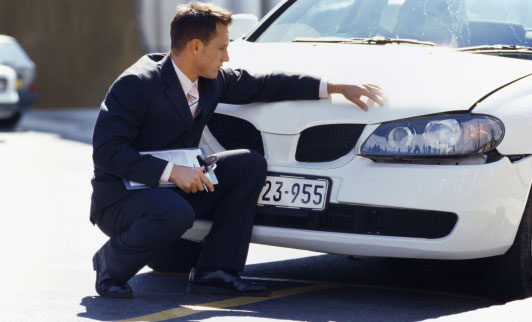
There are over 240 million registered motor vehicles in the U.S., according to the Census Bureau. At a given time, as many as a third of those clutter American roadways, and it is estimated that one-fourth of those are being used in the course of work.
Running errands, making deliveries, visiting customers. Even for those whose employment is not based on driving, it’s fair to say that your vehicle is an essential part of your employment. This presents an important question: If you are involved in an accident in the course of employment, are you covered by your personal auto insurance policy (PAP)?
Like most insurance questions, the answer depends on circumstance. For example, what kind of car are you driving? Does the car belong to you or someone else? What type of business are you in?
But policyholders should proceed with caution, since some PAPs are not as generous. For example, some versions may be more restrictive towards pickups or vans, possibly including a gross vehicle weight (GVW) limitation or a clause that restricts coverage to owned pickups or vans only. Be sure to consult your policy before driving any pickup or van for work.
Further, policyholders should understand that any coverage permitted for business use of personal vehicles by the PAP is not intended for these three vehicle categories:
Commercial-type vehicles. The PAP restricts business use to private passenger autos, pickups and vans. While they can be purchased personally, box trucks, tractor trailers, shuttle busses and other commercial-type vehicles do not fit this description; such vehicles require a commercial auto policy.
Furnished or available for regular use. Often called the “company car” exclusion, this provision is dangerous and must be remedied if the exposure exists. The reason is that a typical PAP will exclude coverage for a vehicle that is regularly available to the policyholder but is not specifically insured under the PAP. For example, if you are furnished a company car as a benefit to your employment, make certain that you are covered by your employer’s auto insurance policy. If not, specific action is required to extend coverage under your PAP; it will not do so automatically. The good news is that this coverage change is usually inexpensive and can be done easily; just be sure to request the change now, before the accident happens. While the definition of furnished or available for regular use varies by case, err on the side of caution. Don’t assume that because you don’t take it home with you each night or that you only drive it occasionally you’re in the clear. Regardless, a vehicle owned by your employer could be considered available for your regular use. This exclusion presents a potential gap that is too risky to ignore;your insurance agent can help you take the appropriate steps to close it.
Vehicles that are the business. A PAP will not cover your vehicle if you use it to carry people for a fee, such as a taxi, limo or shuttle. The only exception is a share-the-expense car pool. And if you’re planning to make a few extra bucks delivering pizzas, auto parts, newspapers or other goods, proceed with caution. Many PAPs also remove coverage for vehicles that are used to deliver food or other types of property for a fee.
While in most cases the PAP will cover you for business use of a personal vehicle, there are situations where it will not. Such situations are not uncommon and, if not remedied, could result in significant financial detriment for you and your family. Consult us for advice on how to close potentially devastating gaps in your PAP today.
Article Source: Trusted Choice®
